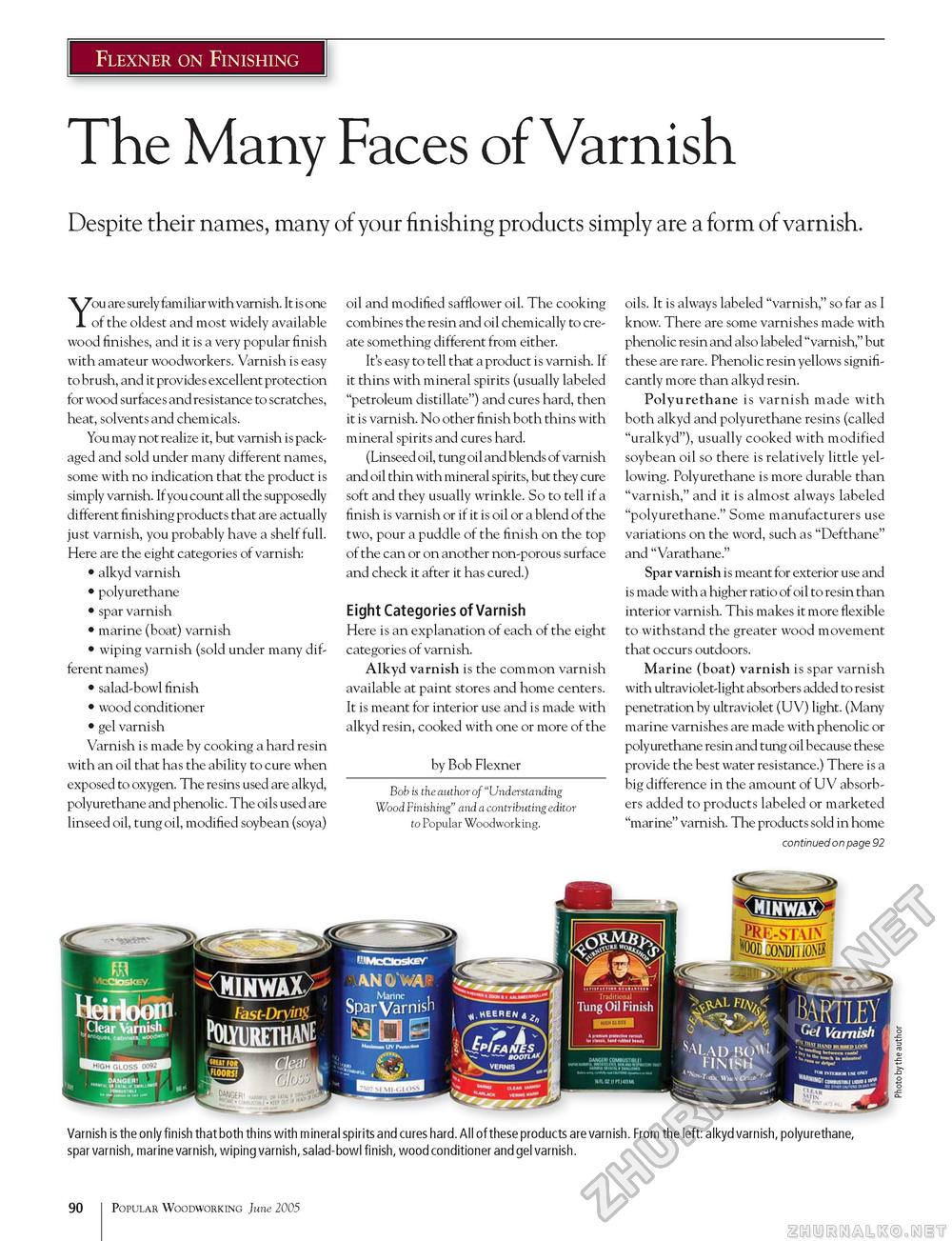Popular Woodworking 2005-06 № 148, страница 92
Flexner on Finishing The Many Faces of Varnish Despite their names, many of your finishing products simply are a form of varnish. You are surely familiar with varnish. It is one of the oldest and most widely available wood finishes, and it is a very popular finish with amateur woodworkers. Varnish is easy to brush, and it provides excellent protection for wood surfaces and resistance to scratches, heat, solvents and chemicals. You may not realize it, but varnish is packaged and sold under many different names, some with no indication that the product is simply varnish. If you count all the supposedly different finishing products that are actually just varnish, you probably have a shelf full. Here are the eight categories of varnish: • alkyd varnish • polyurethane • spar varnish • marine (boat) varnish • wiping varnish (sold under many different names) • salad-bowl finish • wood conditioner • gel varnish Varnish is made by cooking a hard resin with an oil that has the ability to cure when exposed to oxygen. The resins used are alkyd, polyurethane and phenolic. The oils used are linseed oil, tung oil, modified soybean (soya) oil and modified safflower oil. The cooking combines the resin and oil chemically to create something different from either. It's easy to tell that a product is varnish. If it thins with mineral spirits (usually labeled "petroleum distillate") and cures hard, then it is varnish. No other finish both thins with mineral spirits and cures hard. (Linseed oil, tung oil and blends of varnish and oil thin with mineral spirits, but they cure soft and they usually wrinkle. So to tell if a finish is varnish or if it is oil or a blend of the two, pour a puddle of the finish on the top of the can or on another non-porous surface and check it after it has cured.) Eight Categories of Varnish Here is an explanation of each of the eight categories of varnish. Alkyd varnish is the common varnish available at paint stores and home centers. It is meant for interior use and is made with alkyd resin, cooked with one or more of the by Bob Flexner Bob is the author of "Understanding Wood Finishing" and a contributing editor to Popular Woodworking. oils. It is always labeled "varnish," so far as I know. There are some varnishes made with phenolic resin and also labeled "varnish," but these are rare. Phenolic resin yellows significantly more than alkyd resin. Polyurethane is varnish made with both alkyd and polyurethane resins (called "uralkyd"), usually cooked with modified soybean oil so there is relatively little yellowing. Polyurethane is more durable than "varnish," and it is almost always labeled "polyurethane." Some manufacturers use variations on the word, such as "Defthane" and "Varathane." Spar varnish is meant for exterior use and is made with a higher ratio of oil to resin than interior varnish. This makes it more flexible to withstand the greater wood movement that occurs outdoors. Marine (boat) varnish is spar varnish with ultraviolet-light absorbers added to resist penetration by ultraviolet (UV) light. (Many marine varnishes are made with phenolic or polyurethane resin and tung oil because these provide the best water resistance.) There is a big difference in the amount of UV absorbers added to products labeled or marketed "marine" varnish. The products sold in home continued on page 92 JtOTvE bartley Gtf Varnish SALAD B#'L finish Varnish is the only finish that both thins with mineral spirits and cures hard. All of these products are varnish. From the left: alkyd varnish, polyurethane, spar varnish, marine varnish, wiping varnish, salad-bowl finish, wood conditioner and gel varnish. 90 Popular Woodworking June 2005 |








